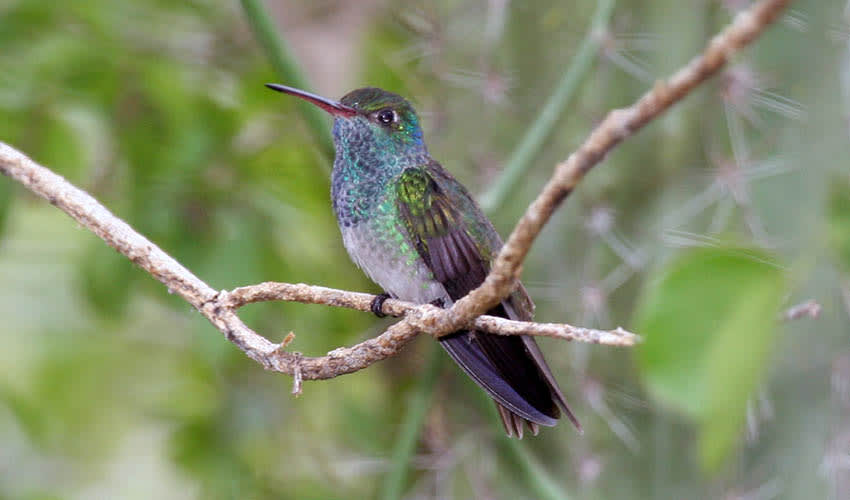A tiny but dazzling jewel of a bird—and it’s the only bird species found exclusively in Honduras. This brilliant green hummingbird is as rare as it is radiant, flashing iridescent shades of emerald, turquoise, and sapphire as it flits from flower to flower in the dry tropical forests and thorny scrublands of northwestern Honduras.
This hummingbird might be small, but it has a big attitude. Like other hummingbirds, the Honduran emerald is fiercely territorial, especially around nectar-rich flowers. It’s often seen zipping through the air at high speed, chasing off other hummingbirds, bees, or butterflies that come too close to its favorite feeding spots. Its wings beat incredibly fast—up to 50 times per second—allowing it to hover, dart, and even fly backward with incredible agility.
What makes the Honduran emerald especially interesting is its unique habitat preference. While many hummingbirds thrive in lush rainforests, this species lives in dry forests and scrub, an environment often overlooked for conservation. It feeds mostly on the nectar of native flowering plants and trees, using its long, slender bill to reach deep into blossoms. Along the way, it helps pollinate plants, playing a key role in the health of its ecosystem.
Sadly, the Honduran emerald is currently listed as Endangered, and for good reason. Over 90% of its original habitat has been lost due to agriculture, cattle grazing, and deforestation. For many years, scientists feared it was on the brink of extinction. But thanks to dedicated conservation efforts, including the creation of protected areas like the Reserva de Vida Silvestre El Ciruelo, its population has stabilized in a few remaining strongholds.
Distribution
 Honduras
HondurasRecent Updates
- This species profile was developed through the collaborative support of Aves Honduras – Asociación Hondureña de Ornitología (ASHO).
Anything we've missed?
Help us improve this page by suggesting edits. Glory never dies!
Suggest an editGet to know me
Terrestrial / Aquatic
Altricial / Precocial
Polygamous / Monogamous
Dimorphic (size) / Monomorphic
Active: Diurnal / Nocturnal
Social behavior: Solitary / Pack / Herd
Diet: Carnivore / Nectarivore / Omnivore / Piscivorous / Insectivore
Migratory: Yes / No
Domesticated: Yes / No
Dangerous: Yes / No




